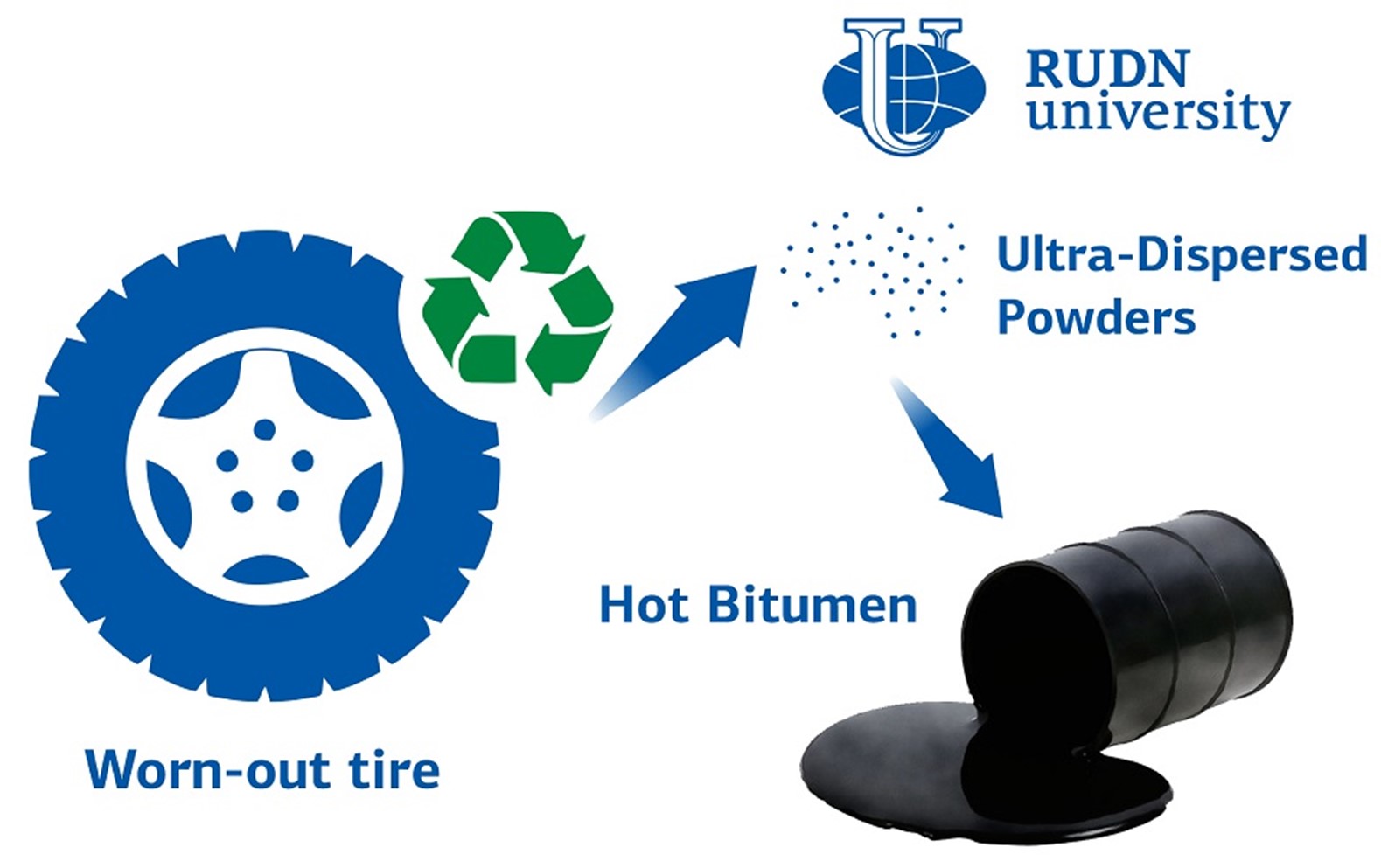RUDN nanotechnologist creates asphalt modifier from old tires and rubber

Car tires can be recycled for secondary use. For example, the addition of crumb rubber increases the life of asphalt. Typically, tires are shredded to particles as small as a few millimeters. Further shredding is too energy-intensive. However, a new method has emerged — high-temperature shear shredding. It takes place with the help of a rotary disperser. The essence of its work is a strong compression
“Among all possible applications of crumb rubber from worn out tires, the most interesting one is the use in road pavement. Crumb rubber as a modifier of bitumen and asphalt concrete mixtures increases their service life and has great potential in the road industry. This combines the problems of recycling used tires and increasing the durability of roads. In this way it is possible to reduce the consumption of primary natural resources,” — Alexander Vecher, PhD in Biology, Deputy Director of the Nanotechnology Research Center at RUDN.
Nanotechnologists prepared rubber crumbs from car tires and then ground them into powder together with butadiene-styrene rubber on a rotary disperser. The powder was added to hot bitumen heated to a temperature of 120-180℃ and stirred for
RUDN nanotechnologists have studied rubber particles before and after their interaction with hot bitumen using scanning electron microscopy. Grinding together with butadiene-styrene rubber leads to the formation of outwardly homogeneous hybrid particles. After a minute of stirring in hot bitumen, the powder particles split into
“Considering that one minute of mixing time corresponds to the technology of obtaining various asphalt concrete mixtures, it can be recommended to use additive powders in a ‘dry’ way, i.e. to introduce them into the asphalt concrete mixture during its production. This will be more economical. In further research we will conduct rheological studies of bitumen with modifiers,” — Alexander Vecher.
The results were published in the journal Polymers.
RUDN summarized the results of the scientific competition "Project Start: work of the science club ". Students of the Faculty of Physics, Mathematics and Natural Sciences have created a project for a managed queuing system using a neural network to redistribute resources between 5G segments. How to increase flexibility, make the network fast and inexpensive and reach more users — tell Gebrial Ibram Esam Zekri ("Fundamental Computer Science and Information Technology", Master's degree, II course) and Ksenia Leontieva ("Applied Mathematics and Computer Science", Master's degree, I course).
The National Demographic Report, 2023 Demographic Well-Being of Russian Regions (hereinafter - the National Demographic Report) was prepared by the scientific team of the Institute of Demographic Studies of the Federal Research Center of the Russian Academy of Sciences, the Vologda Scientific Center of the Russian Academy of Sciences, Peoples' Friendship University of Russia, the Center for Family and Demography of the Academy of Sciences of the Republic of Tatarstan, as well as with the participation of leading scientists from the Republic of Bashkortostan, Stavropol Krai, Volgograd, Ivanovo, Kaliningrad, Nizhny Novgorod, Sverdlovsk Oblasts and Khanty-Mansi Autonomous Okrug–Yugra.
RUDN summarized the results of the scientific competition "Project Start: work of the science club ". Students of the Faculty of Physics, Mathematics and Natural Sciences have created a project for a managed queuing system using a neural network to redistribute resources between 5G segments. How to increase flexibility, make the network fast and inexpensive and reach more users — tell Gebrial Ibram Esam Zekri ("Fundamental Computer Science and Information Technology", Master's degree, II course) and Ksenia Leontieva ("Applied Mathematics and Computer Science", Master's degree, I course).
What is your first association with the word “laboratory”? Flasks and beakers? Microscopes and centrifuges? Yes, many of us would answer the same way.
The National Demographic Report, 2023 Demographic Well-Being of Russian Regions (hereinafter - the National Demographic Report) was prepared by the scientific team of the Institute of Demographic Studies of the Federal Research Center of the Russian Academy of Sciences, the Vologda Scientific Center of the Russian Academy of Sciences, Peoples' Friendship University of Russia, the Center for Family and Demography of the Academy of Sciences of the Republic of Tatarstan, as well as with the participation of leading scientists from the Republic of Bashkortostan, Stavropol Krai, Volgograd, Ivanovo, Kaliningrad, Nizhny Novgorod, Sverdlovsk Oblasts and Khanty-Mansi Autonomous Okrug–Yugra.